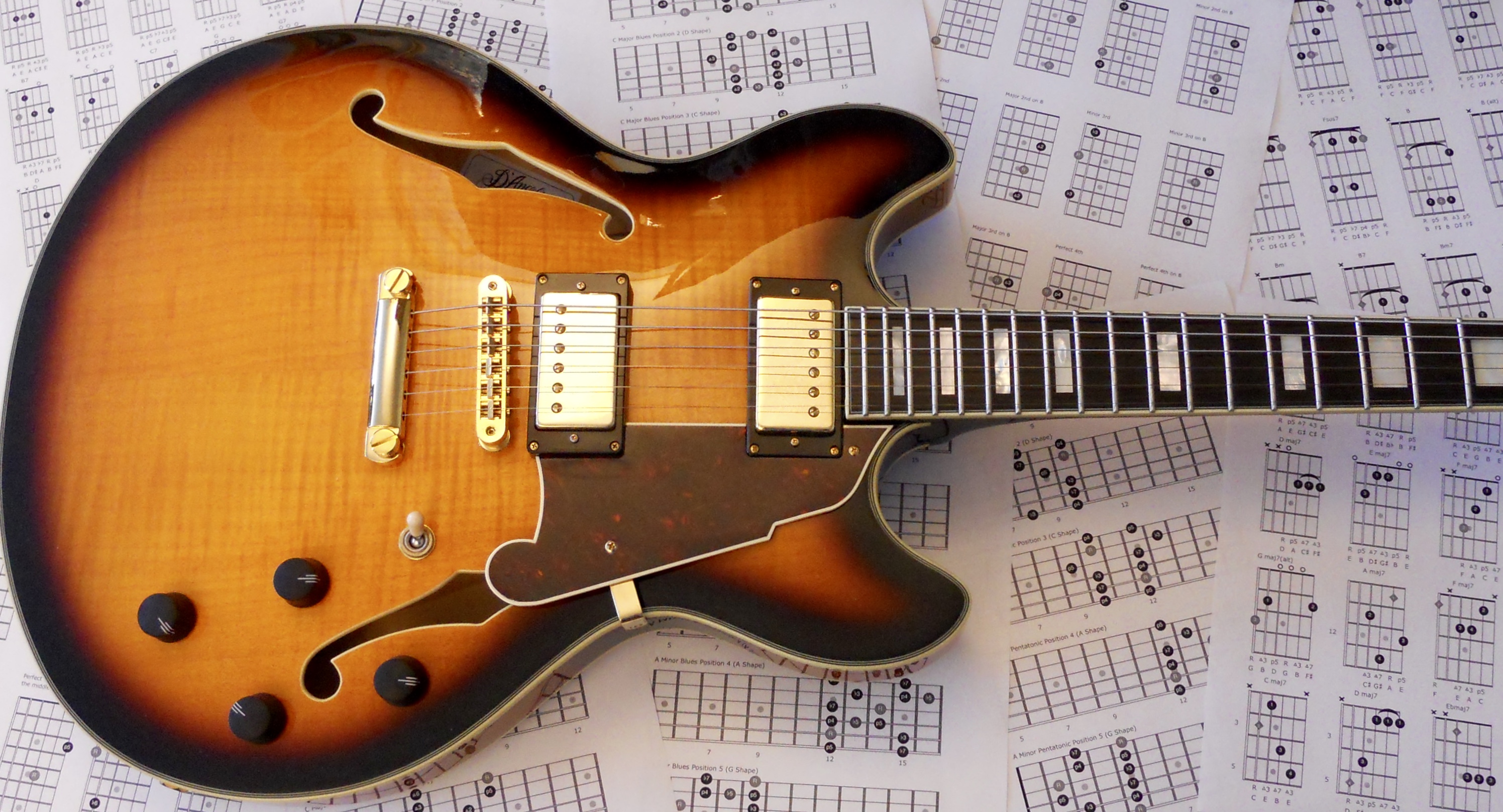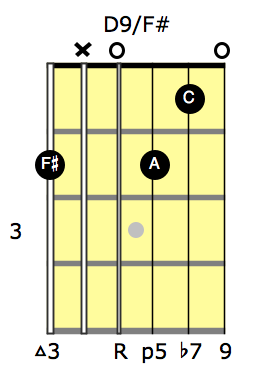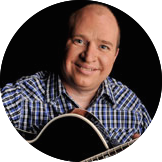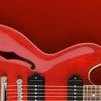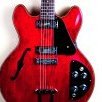-
Posts
309 -
Joined
-
Last visited
-
Days Won
36
Content Type
Profiles
Forums
Gallery
Events
Articles
Blogs
Downloads
Everything posted by V7#5b9
-
The 12-bar blues form serves as a springboard for “Day Tripper.” The verses begin with two four-bar phrases that follow the typical poetic, harmonic, and instrumental guidelines of the blues. Actually, I can hear the common call and response pattern of blues phrasing in the melody, while the ostinato riff opens and unifies the whole song. The third phrase is extended to eight bars, and in my mind serves as a punch line.
-
Call and Response is a common pattern of blues phrasing. This concept is not only present in vocal blues, but also in the development of many instrumental blues solos. So you can definitely have a conversation with yourself in your own improvisation. It doesn’t have to be in the context of a 12-bar blues, but some sort of symmetrical form is helpful. Many tunes have four- or eight-bar sections that can easily be divided into one-, two-, or four-bar chunks for the purpose of call and response. One way to do this on a 12-bar blues form is to treat each third of it as a small three-phrase segment. That is, a short, rhythmically similar phrase is played in each of the first two bars, while the next two bars contain a longer line that seems to answer the first two. This repeats for both of the remaining four-bar segments. Another device within the framework of call and response is to jump between higher and lower registers. This range jumping idea can be applied to a tune with more chord changes and a swinging rhythm. It’s a good effect to use sparingly. Call and response was a prominent feature of the musical environment that helped to shape the jazz style and continues to appear throughout the tradition in compositions and in solo statements. To get a better sense of this concept follow the link: Five Types of Call and Response Phrases.
-
I have just upgraded to the latest 2018 BIAB version. So far I’ve been using it mainly for the etudes in Richie Zellon’s BGIS course. I find it a very versatile tool. The RealTracks are outstanding, and so are the backing tracks you can quickly and easily create for yourself. However, the versatility goes way beyond simple backing tracks. The $130 basic package is probably more than enough for most of us. I think BIAB has become one of those must-have tools for some time now.
-
Let’s not forget that jazz evolved from blues and not the other way around. You can improve your traditional blues playing without knowing anything about jazz. It’s more about the blues scale, phrasing, using bends, hammer-ons and pull-offs. On the other hand, if you want to enhance your blues playing, you will move from Traditional Blues to Jazz Blues to Minor Blues to Bird Blues.
-
More and more books tend to use both regular notation and tab. But, there is one resource that goes a step further. It’s called Bebop Guitar Improv Series. The study includes a notational system occasionally referred to as intervallic script. It is in no way meant to be a substitute for traditional music notation. The main purpose of intervallic script is to serve as a system of staff-less notation, to analyze and memorize melodic phrases in numerical formulas that can easily be recalled, transposed and applied to any key as improvisational vocabulary. In addition it has proven to be an invaluable system in training the mind to visualize the components of a scale and their melodic function in relationship to a given chord. This is a crucial resource when improvising, due to the fact that it is much more practical to think in transposable numerical patterns rather than actual notes. Intervallic script has its limitations, of course, therefore conventional notation and tablature are used throughout the study as well. If you are not a proficient reader, your best next option is to use both the regular notation and tab.
-
@Triple-o Take a look at the musical analysis of “Autumn Leaves” provided on the following PAGE. When you get to the page, you may have to click on the “Music and Lyrics Analysis” in the left column to see the result in the middle column. The original key is G major/E Minor, and the form is A-A-B-C. So, the first 16 bars are the A-A section. The next 8 bars are the B or Bridge section, and the last 8 bars are the C section. When the sections are melodically different, they can be assigned different letters: A, B, C or even D. Now, I don’t know about “breakdown bridge”, but as far as I’m concerned when you add the lyrics (and I do have “Autumn Leaves” sheet music with lyrics version) the B section starts with “Since you …” as you point out, and the C section starts with “But I …” I hope that makes sense to you.
-
Total improvisation is a myth. The ideal in the art of improvisation is to pre-hear lines in your head and then execute them on your instrument. Some players would like you to believe that all of their ideas are completely spontaneous. Many devices and concepts go into creating a good improvised solo. Scales, modes, arpeggios, melodic patterns and licks all play a certain part, along with moments of spontaneity and true inspiration. However, to a large extent, improvisation is really the “creative reorganization” of things you already know.
-
You’re welcome @Triple-o. The Gold options were my choice. My Vol.1 & Vol.2 memberships have expired, so I no longer have access to the forum over there. If you decide to enroll, let me know via PM here and I’ll send you a little hint on how you can get the most bang for your buck. I’ll gladly help you out in answering any questions you may have now, or in the future re: BGIS.
-
That’s pretty much it, but more specifically, you need to be familiar with three elements. 1 Chords & Rhythms Some common blues chord shapes. How the 12 bar blues form works. How to find the I, IV, and V chords in any key and apply them to the 12 bar form. At least one common blues strumming pattern or rhythm. How to start your blues song. How to end your blues song. 2 Soloing What note to start your solo on. What beat to start your solo on. Pentatonic and blues forms. When to use lead techniques (bends, hammer-ons, pull-offs). Licks (phrases). 3 Putting The Pieces Together Assembling your Intro, Rhythm, Solo and Ending. Using licks (phrases) or single notes as fills between vocal lines.
-
@Triple-o I was going to respond, but you keep changing your post and I don’t really know what to focus on. Are you just making a statement now, or do you want some feedback on specific questions? It appears you are looking for the deep understanding of melody and harmony. Well, I’ve mentioned Richie Zellon’s Bebop Guitar Improv Series more than once on this forum, but nobody seems to be really interested at this point. I don’t think you will find any other resource that matches the depth of instruction of the series. Will it tell you how to translate “Once upon a time” into a musical line? Not exactly, after all that type of translation depends on the interpreter, but it probably will answer more questions than you can come up with. If you want to translate specific words into music, Pat Martino’s Alphabet Junction might be your answer.
-
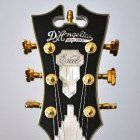
How do I improve my ear and improvisation skills?
V7#5b9 replied to Magnit's topic in Guitar Playing & Technique
@Magnit “Maybe delve into arpeggios?” Yes, absolutely. Arpeggios are the target notes all approach notes resolve to. It doesn’t matter whether the chords you are playing over, are inside or outside the key. “Learn loads of licks by heart?” Yes, absolutely. The phrases you learn become your musical vocabulary, as long as you understand their anatomy and how to use them. Here is a short list of courses for you to consider: Chord By Chord Blues Soloing How To Improvise Blues Solos Bebop Guitar Improv Series As for improving your ear, check out Jazz Guitarist’s Guide To Ear Training. -
... with Paul McCartney.
-

Session 17 - Going Beyond the First Position
V7#5b9 replied to NeilES335's topic in Gibson's Learn & Master Guitar
First of all, do not put any time limit, or compare your progress with somebody else’s. Everyone is different and it takes as long as it does for you to see significant, positive results. Don’t try, just do it and do it consistently. Trial approach is your biggest enemy. Secondly, I don’t think Steve would recommend this method, if it didn’t work. Any method will work eventually if you stick with it. So, to answer your question directly, I personally don’t know of anyone using this method and succeeding. However, I do assume the majority of students here do use this method and succeed. All I can tell you is that my approach to learning the notes of the fretboard was different from the very beginning. I used a couple of methods. One was to just go up and down each string between the nut and the 12th fret, naming the notes using sharps for accidentals when ascending, and flats for accidentals when descending. The other method involved “Five Root Shapes.” Beyond the 12th fret everything repeats. So, I know all the notes of the fretboard and how they relate to the musical staff, but I tend to view it in terms of three four-fret zones. The main reason for knowing the notes is to be able to read music, but also to know where to play the chords, or start scale/arpeggio patterns which I view in terms of easily transposable intervals, or scale degrees. When we play we can’t think fast enough in terms of notes or even intervals or scale/arpeggio degrees. The fingers have to do it automatically for us. But, when we learn and practice our scale/arpeggio patterns, riffs, licks or phrases, we need to be aware of intervals or scale degrees so we know where the chord as well as diatonic and chromatic approach tones are. Intervallic approach allows for much easier transposition of these elements to other keys as the patterns usually remain intact (sometimes they have to be adjusted), whereas the notes change from key to key. -

Session 17 - Going Beyond the First Position
V7#5b9 replied to NeilES335's topic in Gibson's Learn & Master Guitar
The “Three-Notes-On-A-String” scales are navigational patterns, just like the pentatonic forms. They should be learned in terms of intervals, which are easily transposable to any key, rather than notes in those patterns. The notes of the fretboard in any given tuning don’t change, but their function may change depending on the context. So, learning the notes of the fretboard using scale patterns will work eventually, but it may cause more confusion in the beginning and delay the progress. I suggest you pick a method that directly deals with the layout of notes on the guitar fretboard and how they relate to the musical staff. -

Free Jazz Chords Supplemental Resource
V7#5b9 replied to V7#5b9's topic in Jazz Chords Fretboard Workouts
So, here’s the second video with some “Butter Notes” for comping.- 12 replies
-
- 1
-

-
- string sets
- jazz chords construction
-
(and 1 more)
Tagged with:
-
@knightgodinmontreal If you really want to learn all about jazz guitar and the art of jazz improvisation as applied to the guitar, consider Bebop Guitar Improv Series!
-
-

Free Jazz Chords Supplemental Resource
V7#5b9 replied to V7#5b9's topic in Jazz Chords Fretboard Workouts
Comping seems a fitting topic for this thread so I thought I’d put it here. Despite promotional aspect and informality of Richie’s videos, they cover important concepts with a fair bit of depth and you can get a lot out of them. Below the video and for your convenience, I provided a little transcript of the chord types Richie talks about and what you can do with them. Richie promises a follow-up vid as well. Major 7 Chords (1-3-5-7) When a major 7 is over the I of the key you can add the 9 or the 13. When it’s over the IV, it’s a Lydian chord which allows for all it’s upper extensions… 9, #11 and 13. You get to choose. Dominant 7 Chords (1-3-5-b7) This is going to vary widely as far as the extensions go. Usually, although not always, if it resolves a perfect 5th down to a major chord it can use the 9 or the 13. However, if it resolves a perfect 5th down to a minor chord, it will use a b9 or #9 and if you like a #11. A b13 can also replace the 5th. This becomes what is known as an Altered Dominant. Minor 7 Chords (1-b3-5-b7) Almost all minor chords can use a 9th and the 11th, however avoid the 9th if it is a III minor chord. Minor 7b5 Chords (1-b3-b5-b7) also known as Half-diminished chord. For most instances you are safe using the 11th and the b13. Use the 9th only when the I is a Imin6 or Imin-maj7 chord. Diminished 7 Chords (1-b3-b5-bb7) Augmented 7 Chords (1-3-#5-b7) This chord sometimes implies the more complex altered chord. The altered chord can also be viewed as an alternative for an augmented dominant 7th because it has all the same basic tones only that the upper extensions are all altered, that is if you use a 9th it should be a b9 or #9, if you use an 11th it should be a #11. The b13 of course is a #5 which should already be a part of the fundamental 7th chord. Altered Dominant 7th Chords (1-3-b7 / b9, #9, #11, b13) Another instance that usually implies the use of the altered dominant is when you see a 7b9 or 7#9 chord. Dominant 7 Suspended 4 Chords (1-4-5-b7) Here you can safely add the 9th and 13th. Slash Chords (D/C = D triad with a C in the bass) are a way of sometimes simplifying the spelling of an inversion wanted for a chord with specific extensions. Usually, the first portion is an upper extension triad. D/C is made up of: A = 13 F# = #11 D = 9 C = 1 In relation to the C, D is the 9th, F# is the #11, and A is the 13. So, if you know your harmony, you will recognize it as a Lydian or Lydian b7 chord. Another common example would be: F/G C = sus4 A = 9 F = b7 G = 1 In relation to the G bass note the F is the dominant 7th, the A is the 9th, and the C is the sus4 or the 11th depending on the context.- 12 replies
-
- 1
-

-
- string sets
- jazz chords construction
-
(and 1 more)
Tagged with:
-
Nah, I just pick good teachers. In other words, I feed off smarter people than me and then try to relay the info. ? Thanks Bryan, I appreciate your kind comment.
-
I hope the diagram will help. This is your fourth form in the 7th position. I used hollow squares for the major roots and hollow circles for the minor roots. As you can see there are E’s, G’s, and no accidentals.
-
Theoretically, you should be able to hear the subtle difference between the G major and A Dorian because the interval formulas (whole/half step arrangements) are not the same, but the majority of music in the western world has been based around the major scale and its harmony. Our ears are used to hearing melodies in relation to this major scale. Because A Dorian is built from G major, playing it in isolation will tend to make you hear it as wanting to resolve to the root of the parent scale or G major. This destroys the modal characteristics and the end result is that you simply hear the major scale starting from a different note. To highlight the character of the mode it’s best to play it in the context of the modal progression. In the case of A Dorian mode, Am or Am7 needs to be your tonic chord or tonal centre. You also can try playing it against the A drone. Regardless of whether the progression is modal (using modes) or tonal (using major/minor scales or keys) modes are very useful for improvisation in various styles.
-
Just have some fun with jazz guitar politics!
-

Session 14 - Giving Your Playing Some Style
V7#5b9 replied to NeilES335's topic in Gibson's Learn & Master Guitar
I second @Wim VD comments. @NeilES335, Since you are interested in jazz, I also recommend learning arpeggios. However, an in-depth study of arpeggios is beyond the scope of L&MG. And so are the related scales or modes. In jazz every chord and arpeggio are viewed from the perspective of its related scale or mode. Arpeggios are the backbone or framework of a solo. They are targeted with various approach tones that resolve to them. At the point of chord change preferably a primary guide tone of the next chord is targeted to imply the change in the solo line itself. Therefore, it’s not enough to learn the arpeggio shape and know where the roots are. You really need to know the function of all arpeggio degrees, as well as the function of the remaining scales degrees it comes from, to properly construct your lines. For example, for a major tonality you need to know at least seven scales or modes in at least five (CAGED), but preferably seven (Extended CAGED) patterns. Ideally, the goal is to learn each scale, the associated chord and arpeggio simultaneously or as one. It may seem like a huge task, but each component reinforces the others. Learning them separately only causes initial confusion and delays full understanding of the “Big picture.” Yes, you can get away with playing the C major scale instead of the mixolydian mode over the G7 or V7 chord in the key of C, but by superimposing the ionian mode over the V7 chord, you lose the functional perspective. You no longer know where your target tones are, unless you do some serious mental gymnastics. And since most scales contain at least one “avoid” note, you may easily stumble upon it. For an in-depth instruction in jazz improvisation on guitar I highly recommend Richie Zellon’s Bebop Guitar Improv Series. I admit the amount of material is staggering and it does take time, but the course is simply stellar. You won’t be improvising any time soon, therefore the sooner you start the better. You can always have fun playing something simpler until you get there. Yesterday, I put up some interesting vids from Richie on my blog. Check ‘em out! He’s just completed the second and final volume of the course. Chord melody and building harmony on guitar is his next project. Anyway, back to woodshedding. Drop me a line if you have any specific questions regarding BGIS! I don’t check the forum all that often these days. -

Finished Session 20 and the L&M course today!
V7#5b9 replied to Wim VD's topic in Gibson's Learn & Master Guitar
Blues followed by Fingerstyle sounds like a good plan. The tricky part about building repertoire is to keep each new song in the practice rotation long enough so it becomes second nature. Again, well done! Keep it up! -

Finished Session 20 and the L&M course today!
V7#5b9 replied to Wim VD's topic in Gibson's Learn & Master Guitar
@Wim VD Congrats on mission accomplished! ??? Do you have any particular style(s) or genre(s) you want to focus on now, or perhaps a new guitar course you want to tackle?

